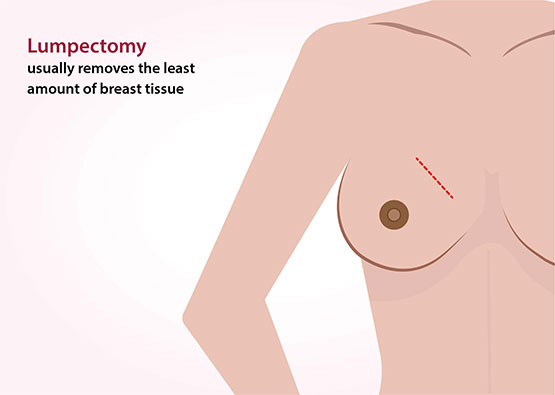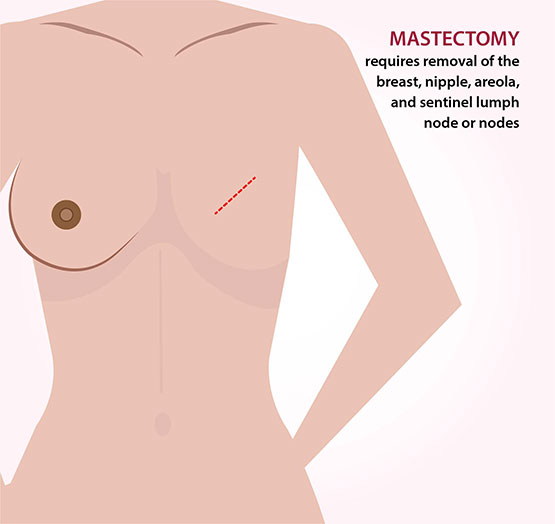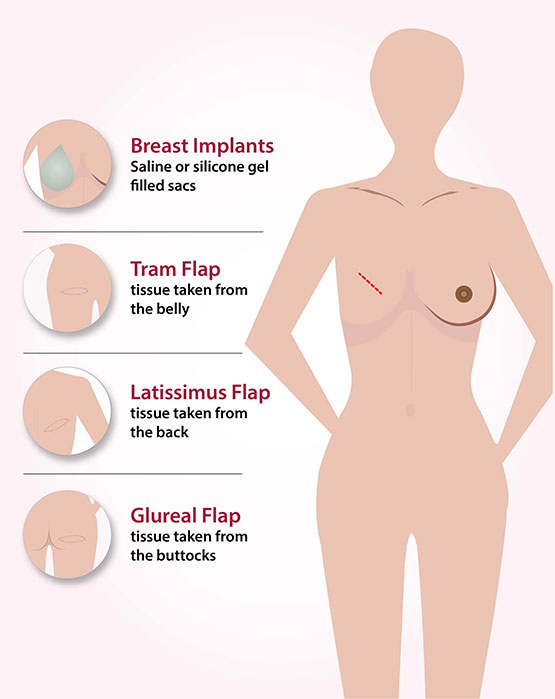Your Doctor Patient Relationship
From the time you are diagnosed with breast cancer, you will work with a team of cancer specialists that may include:
- A medical oncologist
- A surgical oncologist
- A radiation oncologist
- A care-manager/caseworker
Your healthcare team may also include an oncology nurse and a registered dietitian.Before selecting your treatment plan, you should first understand the difference between standard treatment and clinical trials.
- Breast cancer standard treatments are methods that experts agree are appropriate, accepted, and widely used. These standard procedures have proven useful in fighting breast cancer in the past.
- A breast cancer clinical trial, on the other hand, is an approved research study that some doctors believe has a strong potential to improve standard treatments. When clinical trials demonstrate better results than the standard, that new treatment becomes the standard. Remember, all our current standards were clinical trials at one time. Any clinical trial before coming to the floor where it is opened to patients has to undergo rigorous scientific and ethical committee approvals, hence most clinical trials are looking at improving the current standard of care. Taking part in a clinical trial is your personal choice and is voluntary but taking part in a trial may benefit you and will be your contribution to medical literature and scientific progress.

BREAST CANCER STANDARD TREATMENTS BY STAGE
Your treatment options depend on the stage of your disease and these factors:
- The size of the tumor in relation to the size of your breast
- The results of specific pathology tests (hormone receptors, HER2 receptors, grade of the cells, proliferation rate of the cells)
- Whether you have gone through menopause
- Your general health
- Your age
- Your family history or other risk factors associated with a predisposition for developing breast or ovarian cancer

SURGERY
The first step and most common form of treatment for breast cancer is surgery. Surgery involves removing the tumor and nearby margins. The margin is the surrounding tissue that might be cancerous. The goal of surgery is to remove not only the tumor, but also enough of the margin to be able to test for the spread of the cancer. Once the removed tissue is checked, your post-operative report should tell you if you had “clear margins,” (meaning the tissue farthest away from the breast was free of any cancer cells.)
Either your doctor or a breast surgical oncologist (a breast surgeon specializing in breast cancer surgeries) will advise you regarding the surgery options to consider based on specific information about your breast cancer. You can discuss and compare the benefits and risks of each option and describe how well each possible choice can achieve the goal of ridding your body of the primary breast cancer.
Surgical options available are :
Lumpectomy
A lumpectomy usually removes the least amount of breast tissue. The surgeon removes the cancer and a small portion or margin of the surrounding tissue, but not the breast itself. Even though the lumpectomy is the least invasive breast cancer surgery, it can still be very effective, and further surgery may not be needed in the breast. However it is essential to have a axillary staging procedure to check the spread of cancer to the axilla as that is the first site where the cancer cells migrate to from the breast.


Mastectomy
In the past, breast cancer surgery often required removing the entire breast, chest wall, and all axillary lymph nodes in a procedure called a radical mastectomy. While radical mastectomies are less common today, there are instances in which this surgery is the best option to treat the cancer. If the cancer is detected early enough, there are usually options that will remove the cancer while preserving breast tissue. The common options are a lumpectomy (most often followed by breast radiation treatments) and a partial mastectomy.
The More Common Mastectomy Procedures Today Are:
- Partial Mastectomy
- Skin-Sparing Mastectomy
- Modified Radical Mastectomy
BREAST RECONSTRUCTION
There are a few options for breast reconstruction, and which one you use will depend on your age, body type, and treatment plan.
- Breast Implants: The breasts are filled with sacs of saline or silicone gel.
- Skin Grafts and Transplant: (TRAM Flap, Latissimus Flap, or Gluteal Flap) An alternative solution is to use tissue the surgeon removes from another part of your body, like the belly (TRAM), back (latissimus), or buttocks (gluteal). The surgeon sculpts this tissue into the shape of your breast.
- Additional Cosmetic Details: In addition to reconstructing the breast, the surgeon can add a nipple, change the shape or size of the reconstructed breast, and operate on the opposite breast as well for a better match. The plastic surgeon will be able to discuss with you the benefits and risks of each procedure and help you decide what will make you feel the most natural.
One alternative to breast reconstruction is a removable prosthetic breast that is worn in the bra. This will preserve the shape and look of the breast without the surgical procedures. Some women opt for a prosthesis to help balance out their weight and posture, too.

CHEMOTHERAPY
Chemotherapy is a treatment method that uses a combination of drugs to either destroy cancer cells or slow down the growth of cancer cells.
Cytotoxic drugs (meaning “toxic to cells”) are usually given orally or through a vein (intravenously or “through the bloodstream”).
Chemotherapy is a systemic therapy, meaning that the drugs travel in the bloodstream throughout the entire body. Chemotherapy is offered to most patients based on several factors including:

- Tumor type
- Tumor grade
- Tumor size
- Type of receptors and status
- Number of lymph nodes involved and degree of involvement
- The risk for cancer to spread elsewhere in the body
- And your fitness to be able to tolerate chemotherapy
Your medical team will work to select the right blend of chemotherapy drugs to suppress each stage of the cancer cells’ growth.
Chemotherapy is commonly prescribed along with other treatment methods such as hormonal and targeted therapies. It can also be used to shrink a tumor before surgery for easier and safer removal.
If you receive chemotherapy, your doctor will administer it in short courses with several weeks in between to allow your normal cells to recover. This treatment period can be a challenging time emotionally and physically. It is important for you to develop a support team of family or friends that can help comfort and encourage you in this time.
Although chemotherapy kills the fast-growing cancer cells, the drugs can also unfortunately harm normal cells that divide rapidly.
- You may have a reduction in red blood cells. When drugs lower the levels of healthy blood cells, you're more likely to get infections, bruise or bleed easily, and feel very weak and tired. Your healthcare team will check for low levels of blood cells. If your levels are low, your healthcare team may stop the chemotherapy for a while or reduce the dose of the drug. There are also medicines that can help your body make new blood cells.
- Chemotherapy may affect the cells that produce hair. Chemotherapy may cause hair loss. If you lose your hair, it will grow back after treatment, but the color and texture may be changed.
- You may have changes from a different balance of cells lining your intestinal tract. Chemotherapy can cause a poor appetite, nausea and vomiting, diarrhea, or mouth and lip sores. Your healthcare team can prescribe medicines and suggest other ways to help with these problems.
- Chemotherapy may affect the nerve cells. Some drugs used for breast cancer can cause tingling or numbness in the hands or feet.

RADIATION THERAPY
Radiation therapy (also called radiotherapy) uses high-energy rays to kill cancer cells. It affects cells only in the part of the body that is treated with the radiation. Breast cancer radiation therapy may be used to destroy any remaining mutated cells that remain in the breast or armpit area after surgery.
Most radiation therapy is administered by a radiation oncologist at a radiation center and usually begins three to four weeks after surgery and chemotherapy. The radiation is used to destroy undetectable cancer cells and reduce the risk of cancer recurring in the affected breast.
There are two main kinds of radiation therapy that may be considered, and some people have both.
- External Beam Breast Cancer Radiation (Traditional cancer-killing rays delivered by a large machine)
- Internal Breast Cancer Radiation (Newer treatments that inject radioactive cancer-killing treatments only in the affected area)
Keep in mind that the course of treatment you decide is something you should discuss with your radiation oncologist in order to ensure that it is as effective as possible.
Brachytherapy (Internal Radiation) Delivered Via Implantable Device
The doctor places a device inside the breast at the time of the surgery or shortly thereafter which carries targeted radiation to the tissue where the cancer originally grew (also known as the tumor bed). This type of radiation may take only one treatment delivered in the operating room or may take 5-7 days given on an outpatient basis in the radiation therapy department.
In nearly all cases, the appropriate method is determined by the radiation oncologist based on the location and size of the tumor.
Side Effects Of Radiation
Radiation therapy can have side effects, and these vary from person to person.
The most common side-effects are:
- Sunburn-type skin irritation of the targeted area (which may range from mild to intense)
- Red, dry, tender, or itchy skin
- Breast heaviness
- Discoloration, redness, or a bruised appearance
- General fatigue
If you experience difficulty from side effects, you should discuss them with your doctor, who may be able to suggest ways you can treat side effects and help yourself feel more comfortable. These problems usually go away over a short period of time, but there may be a lasting change in the color of your skin.

HORMONE THERAPY
Hormones like estrogen and progesterone are hormones produced by glands in the body. Normally, these hormones help regulate body cycles, like menstruation. However, sometimes these same hormones can cause cancer to grow.
The pathologist will perform tests on the breast cancer cells to determine if they have receptors that feed on estrogen or progesterone, stimulating their growth. If the cancer cells have these receptors, your doctor may recommend hormone therapy drugs, such as blockers or inhibitors. Both types of drugs help to destroy cancer cells by cutting off their supply of hormones.
Hormone inhibitors also target breast cancer cells with hormone receptors, but unlike hormone blockers, they work by reducing the body’s hormone production. When breast cancer cells are cut off from the ‘food supply’ (in this case, estrogen) the tumor begins to starve and die.
TARGETED THERAPY
In addition to chemotherapy and hormone therapy, there are newer, more effective treatments that can attack specific breast cancer cells without harming normal cells. Currently, these targeted methods are commonly used in combination with traditional chemotherapy. However, targeted drugs often have less severe side effects than standard chemotherapy drugs
Breast cancer targeted therapy uses drugs that block the growth of breast cancer cells in specific ways. For example, targeted therapy may block the action of an abnormal protein (such as HER2) that stimulates the growth of breast cancer cells.


NUTRITION AND FITNESS
It's important for you to take very good care of yourself before, during, and after cancer treatment
- Taking care of yourself includes eating well and staying as active as you can.
- Do your best to eat the right amount of calories to maintain a good weight.
- Adequate protein can help to keep up your strength
Eating well may actually help you feel better and have more energy. Sometimes, especially during or soon after treatment, you may not feel like eating. Some treatments can leave you feeling tired and uncomfortable. Or you may find that some foods don't taste as good as they used to.
In addition, the side effects of treatment (such as poor appetite, nausea, vomiting, or mouth blisters) can make it hard to eat well. On the other hand, some women treated for breast cancer may have a problem with weight gain.
Your doctor, a registered dietitian, or another healthcare provider can suggest ways to help you meet your nutrition needs and remain as close to a healthy weight as you can.
Many women find that they feel better when they stay active. Walking, yoga, swimming, and other activities can keep you strong and increase your energy. Exercise may reduce nausea and pain and make treatment easier to handle. It also can help relieve stress. Whatever physical activity you choose, be sure to talk to your doctor before you start.
Also, if your activity causes you pain or other problems, be sure to let your doctor or nurse know.